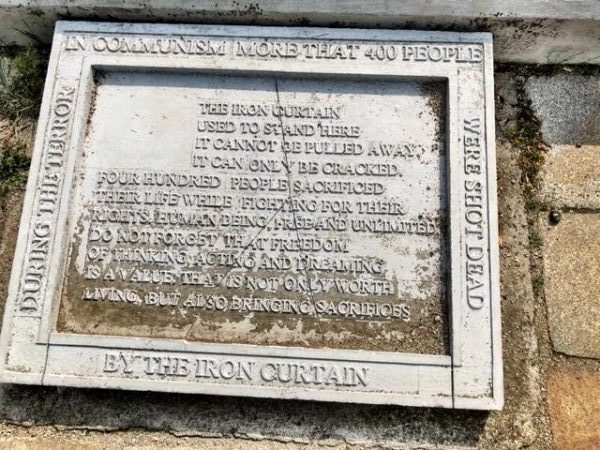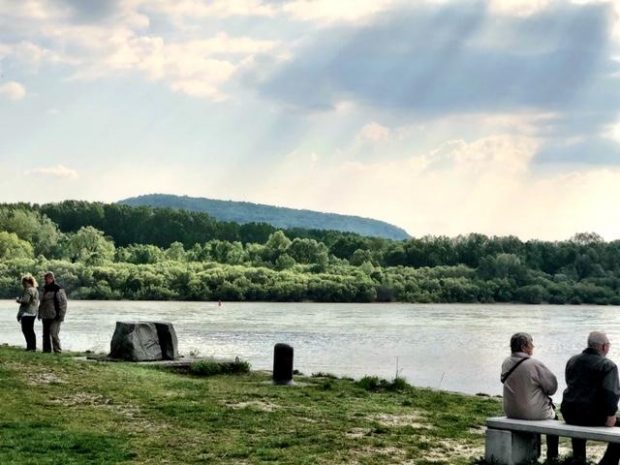May Day In Bratislava

Ilya Somin says that today ought to be given over to the remembrance of those killed by Communists. Excerpts:
May Day began as a holiday for socialists and labor union activists, not just communists. But over time, the date was taken over by the Soviet Union and other communist regimes and used as a propaganda tool to prop up their [authority]. I suggest that we instead use it as a day to commemorate those regimes’ millions of victims. The authoritative Black Book of Communism estimates the total at 80 to 100 million dead, greater than that caused by all other twentieth century tyrannies combined. We appropriately have a Holocaust Memorial Day. It is equally appropriate to commemorate the victims of the twentieth century’s other great totalitarian tyranny. And May Day is the most fitting day to do so…
More:
While the influence of communist ideology has declined since its mid-twentieth century peak, it is far from dead. Largely unreformed communist regimes remain in power in Cuba and North Korea. In Venezuela, the Marxist government’s socialist policies have resulted in political repression, the starvation of children, and a massive refugee crisis—the biggest in the history of the Western hemisphere. The regime continues to hold on to power by means of repression, despite growing international and domestic opposition. The struggle for freedom in Venezuela is continues even as I write these words.
I spent part of today in Bratislava, the capital of Slovakia, in the company of Vladimir Palko (see above). He is a mathematician and Catholic former politician (he was Interior Minister in a previous government), and was an activist in the underground church during the Communist dictatorship. A friend in the Czech Republic told me that Palko is one of the “pillars of the Christian culture of Slovakia.” Our lunch discussion was not on the record, so it would be impolite at best for me to quote him. I learned a very great deal, though, about the underground church, and what it did to keep hope alive under Communism.
We met after noon mass at St. Martin’s Cathedral, a mass that was offered for the soul of Father Vladimir Jukl (d. 2012), a leader of the underground church. Palko — an avid reader of The American Conservative, by the way — told me about the heroism of Fr. Jukl and Silvestir Krcmery (d. 2013), a layman who was also a leader of the underground church movement. They had both been formed by Father Tomislav Kolakovic (d. 1990), a Croatian Jesuit who escaped the Nazis, and who secretly organized cells of Christian anti-communist resistance. Jaroslav Daniska, a Slovak conservative journalist, explained to me later that Fr. Kolakovic saw the Communist repression coming, and patiently organized circles of believers, and prepared them to endure and to resist.
Anyway, after lunch, Palko led me and others from our lunch party to the square where the March 25, 1988 Candle Demonstration was held. Jukl, Krcmery, and Kolakovic had organized this “spontaneous” meeting of Slovak Catholics — 10,000 or so — to demand religious liberty and civil rights for all Czechoslovaks. It was a peaceful moment of prayer and singing, but the Communists broke it up violently. Here’s some video:
[youtube https://www.youtube.com/watch?v=22U4zjrcZHU]
Palko was a 31 year old mathematician that day, and decided that even though he was a husband and father of three, he had to be on the square to bear witness to the truth. He showed me the fountain where he was standing shoulder to shoulder with four strangers, all of them praying together. He said he has never seen them since, but he has rarely if ever felt closer to anybody. The police hit him with a water cannon at the end. He told me that there comes a time in every man’s life when you have to find out what you are made of. The Candle Demonstration was that moment for Vladimir Palko. “It was one of the most important moments of my life,” he told me. After that, Palko was afraid of nothing, and became active in anti-communist resistance, and then building a democracy in post-communist Slovakia.
After we said goodbye to Palko, my friends took me to the ruins of Devin Castle, overlooking a strategic point on the Danube. Across the river is Austria. Over the course of the Communist dictatorship, 400 people were shot and killed at this point, trying to swim across to freedom in Austria, on the far bank. Here is their monument:

A plaque at the foot of the monument:

Here is the view from next to the monument. On the far bank is Austria. The Iron Curtain ran right down the middle of this river. That’s how close freedom was. Four hundred souls died with Communist bullets in their back as they swam for liberty. Today is the day to remember them.
UPDATE: A Slovak reader writes (and I thank him for the clarification):
Thank you for this touching piece about our country and its history. One factual correction: the 400 people or so whose names are written on the monument, did not die at the point of the monument only, but on Czechoslovak borders with West (Austria or West Germany) as a whole, while attempting to flee to the West. Also, not all of them were “shot and killed” – the number also includes the drowned, etc.

Subscribe for as little as $5/mo to start commenting on Rod’s blog.